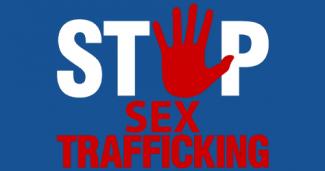4 Tips to Protect Your Kids on Social Media from Sex Traffickers
Have you ever accepted an online friend request from someone you don’t know? Maybe you accepted because you had mutual friends in common or the same interests in music or politics. With nearly 95 percent of teens now having some access to a smartphone, this type of online “friendship” is becoming an increasingly popular way for sex traffickers to recruit and groom young victims.
Trafficking is a form of modern-day slavery that uses tactics including force, fraud, and coercion to make victims engage in labor or commercial sexual exploitation. It is the second fastest growing criminal industry in the world, second only to drug trafficking.
A recently released report from a nonprofit organization working to stop child trafficking shows that 55 percent of trafficking victims in 2015 met their abuser through a website, app, or text. While most traffickers still use face-to-face contact to build a bond with victims, technology-based communication is becoming another popular method for abusers.
Here are four tips to help keep your kids safe online:
- Set strict privacy settings: If your child’s social media account is public, anyone can see their photos and personal information. Make sure that you restrict access to their profile only to their friends and follows.
- Don’t share personal information with strangers online: Social media should be a place where you safely interact with friends and family! Encourage your kids to only accept friends/follows from people who they know. Remind kids that chat functions for popular online games like “Fortnite” are only for game play and not for disclosing personal information. If a stranger becomes an online friend, they could slowly build trust and potentially start grooming your child for trafficking.
- Think before posting: Impress upon your kids that everything they post, regardless of privacy settings that you have set, is in the public domain. They should not post their phone number because that gives people a direct line to contact them. They should think twice about whether tagging a location in a photo because that gives people information about where they are located at that moment.
- Know the warning signs of trafficking: Recognizing the warning signs of sex trafficking will help you protect your kid and others. Use OAG’s free resource to learn how to spot victims of trafficking and how to get them help.
OAG’s Anti-Trafficking Initiative works to identify youth at risk of sex trafficking in the child abuse and neglect system and connect those youth to support services. OAG also works to educate youth and the community about the warning signs of sex trafficking and how they can help victims.

